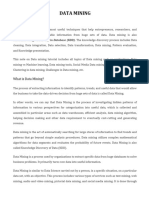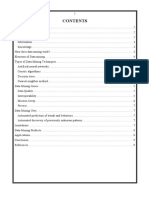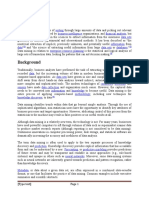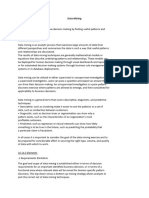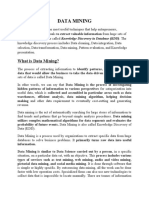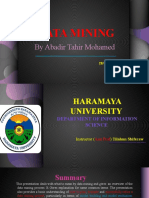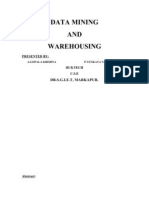0% found this document useful (0 votes)
49 views1 pageData Mining
Data mining involves using sophisticated data analysis tools to discover previously unknown patterns and relationships in large datasets. It uses statistical models, algorithms, and machine learning methods to analyze and predict patterns. Data mining can examine data that is quantitative, textual, or multimedia, and uses techniques like association, sequence analysis, classification, clustering, and forecasting. Unlike traditional data analysis which tests hypotheses, data mining uses discovery approaches to simultaneously examine multiple relationships in data to identify unique or common patterns.
Uploaded by
sexy_ram22Copyright
© Attribution Non-Commercial (BY-NC)
We take content rights seriously. If you suspect this is your content, claim it here.
Available Formats
Download as DOC, PDF, TXT or read online on Scribd
0% found this document useful (0 votes)
49 views1 pageData Mining
Data mining involves using sophisticated data analysis tools to discover previously unknown patterns and relationships in large datasets. It uses statistical models, algorithms, and machine learning methods to analyze and predict patterns. Data mining can examine data that is quantitative, textual, or multimedia, and uses techniques like association, sequence analysis, classification, clustering, and forecasting. Unlike traditional data analysis which tests hypotheses, data mining uses discovery approaches to simultaneously examine multiple relationships in data to identify unique or common patterns.
Uploaded by
sexy_ram22Copyright
© Attribution Non-Commercial (BY-NC)
We take content rights seriously. If you suspect this is your content, claim it here.
Available Formats
Download as DOC, PDF, TXT or read online on Scribd
/ 1








